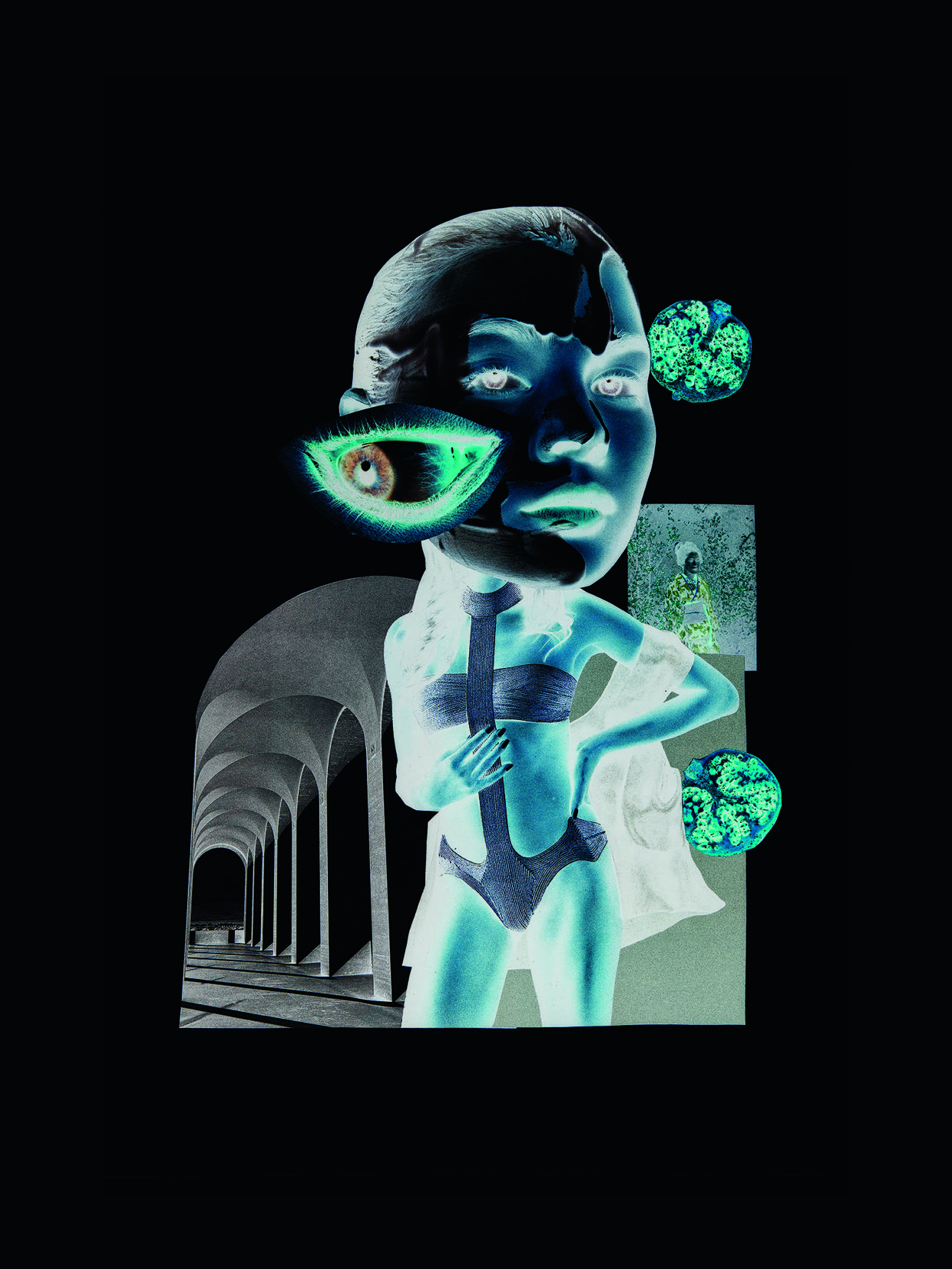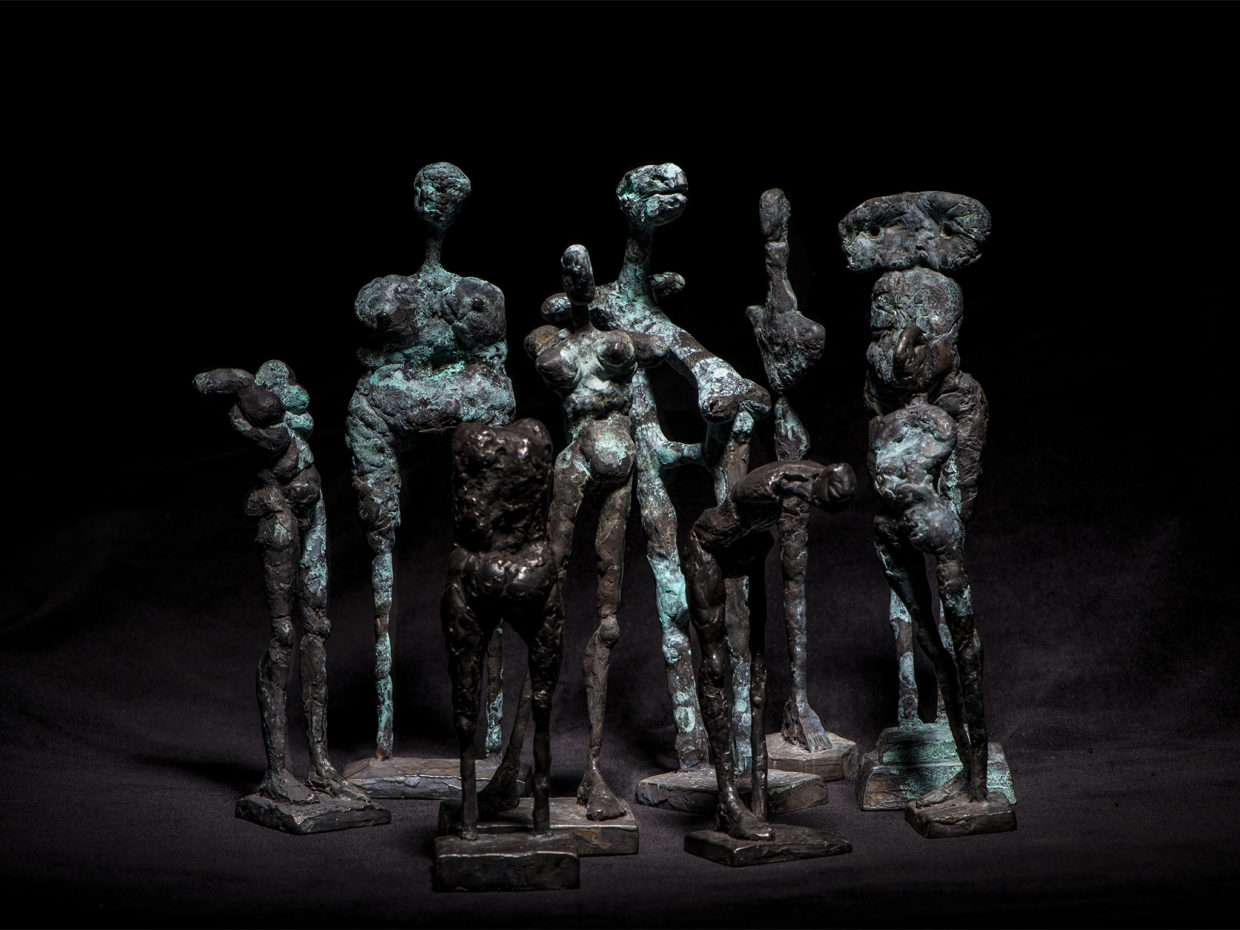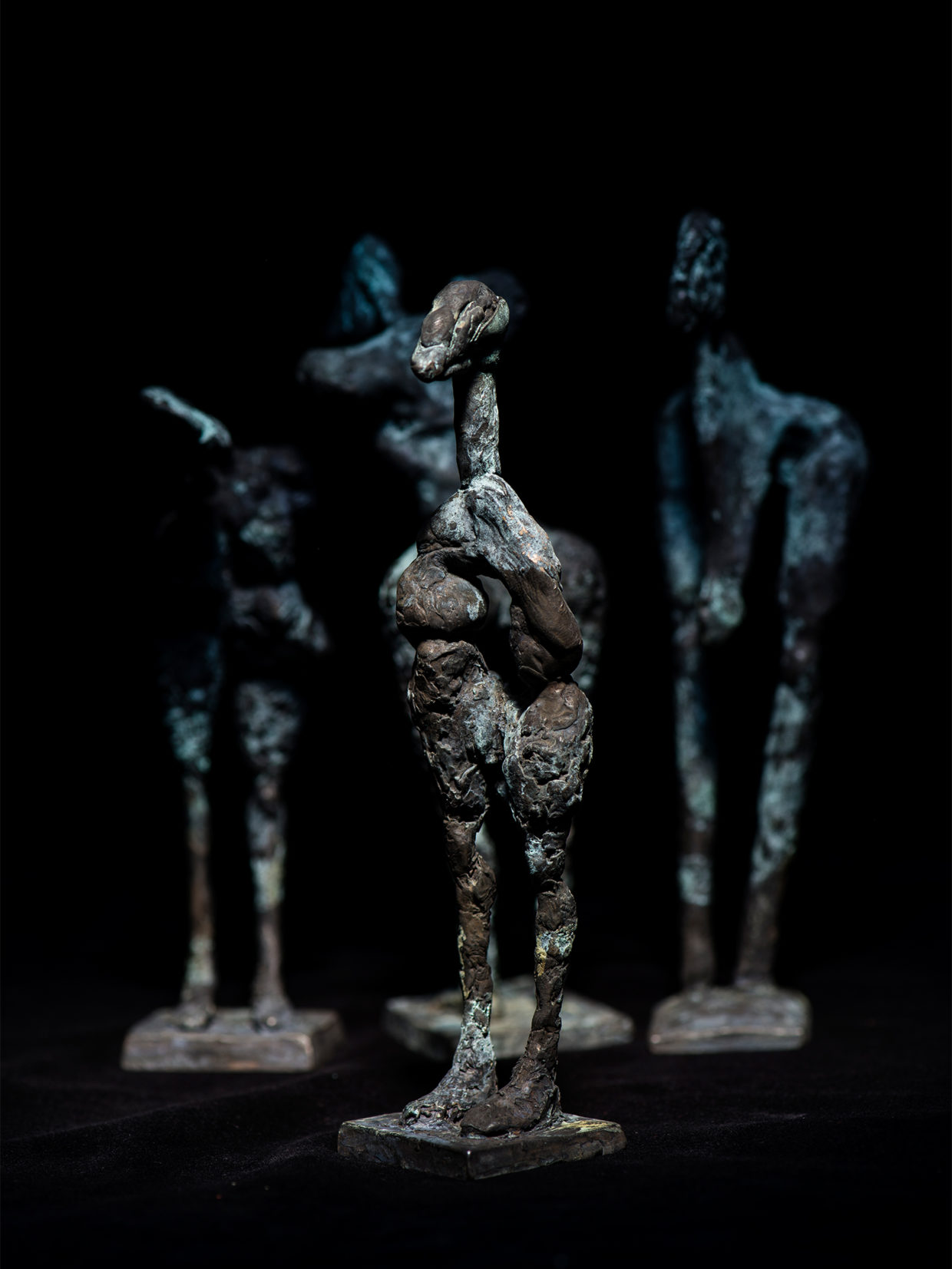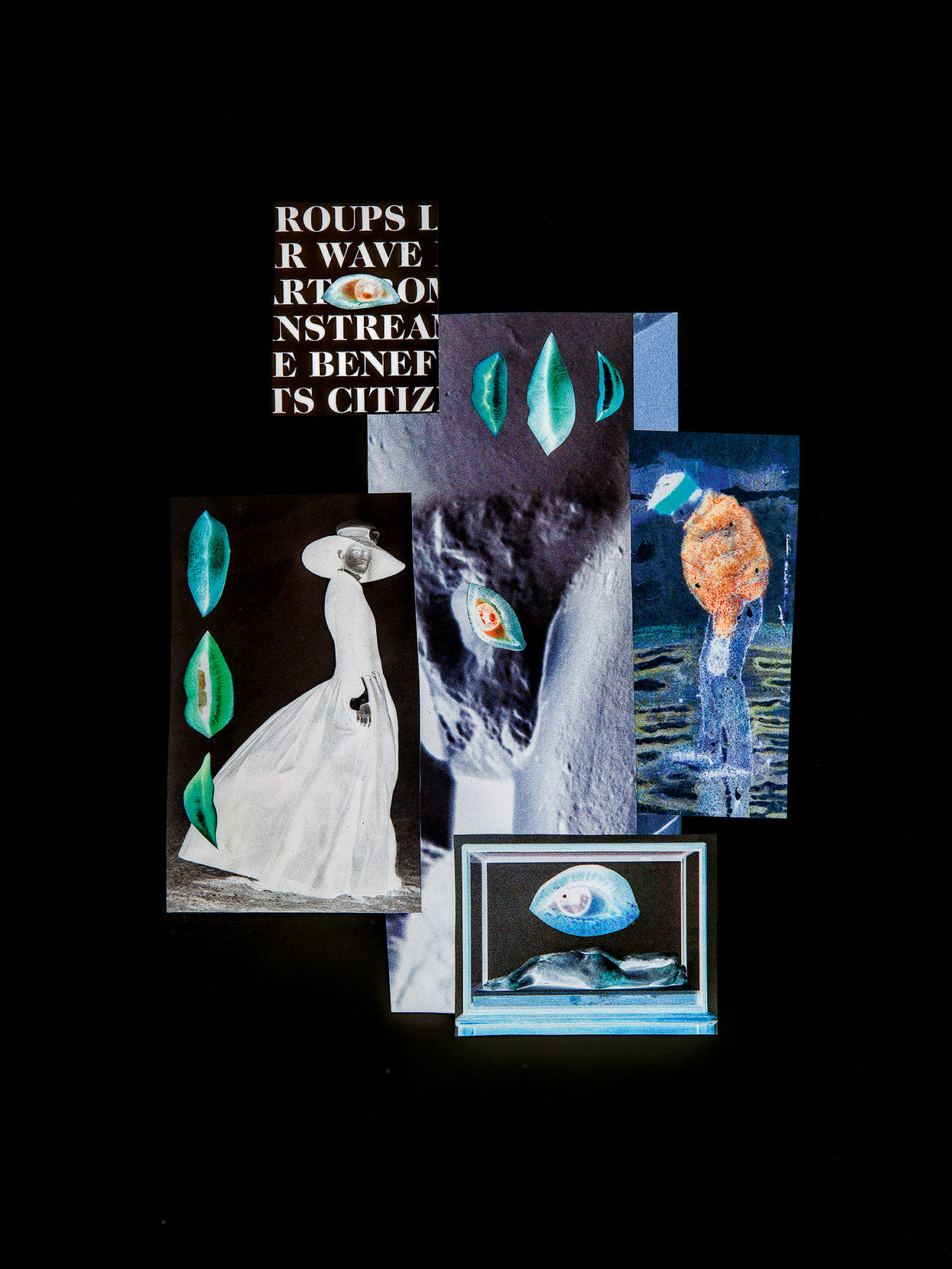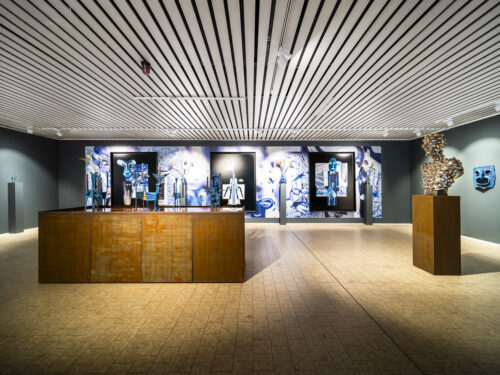
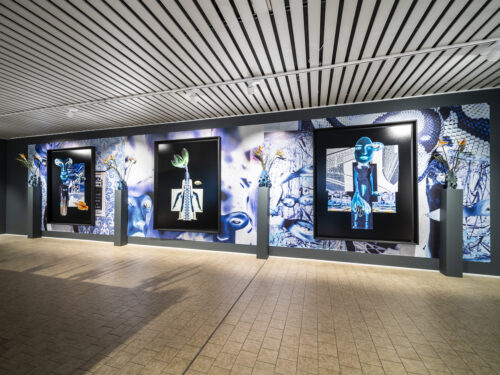
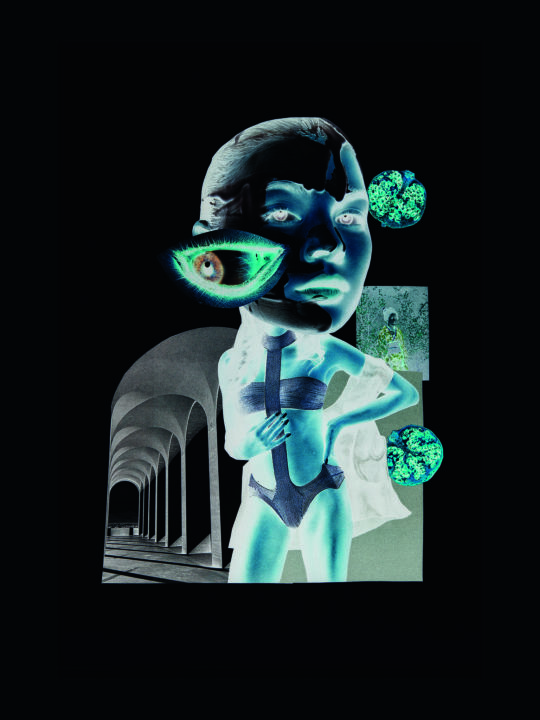
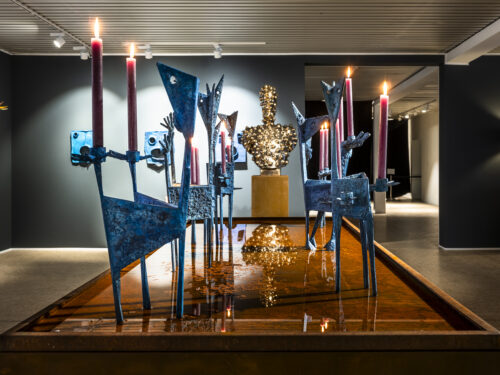


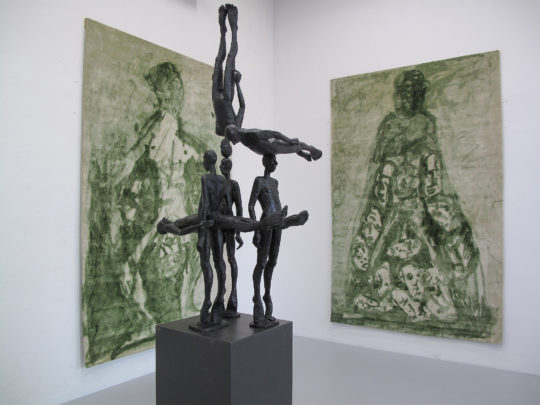
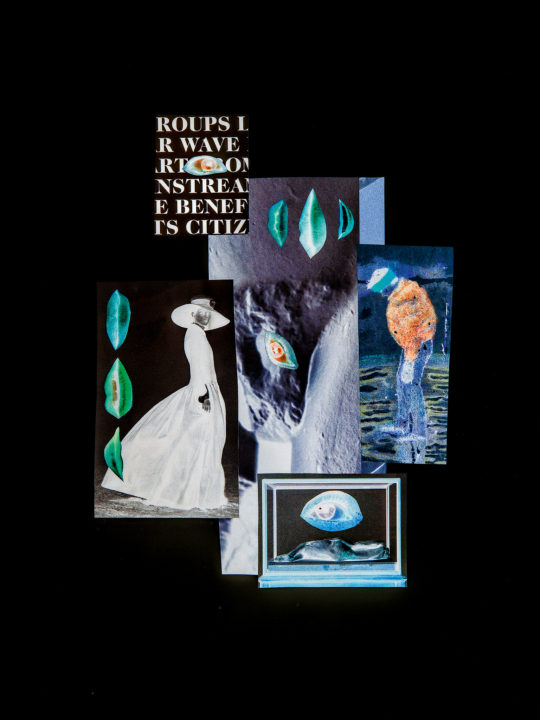

Johannes Philipp Speder
Strictness. Miracles. Chambers.
When you are invited to an exploration of the world, it's similar to getting off a plane after hours, or - a little less elaborate - opening a book. Foreign worlds are hours or kilometers away from us, are journeys, time travels or journeys that we only go through in our imagination. We can come out in Timbuktu or in Xanadu, at the Cape of Good Hope or in El Dorado.
When we cross the border, questions arise such as, which rules and laws prevail or apply here, what is the space like and who lives here? Johannes Speder does not draw borders. He doesn't give us maps, doesn't draw landscapes and doesn't build houses and cities. Topography? Nada. His world is only defined by the beings that populate it. It is a wild hodgepodge of hybrid figures. Forms we don't know about are taking their final form before our eyes or are undergoing a metamorphosis. Do they change from humans to animals, from animals to humans or in a third direction, into completely new beings? What is the original, we ask ourselves, and what is change, what is body and what is prosthesis? Or formulated more organically: What has grown and what has become overgrown? Is the head, that which remains, or is it the snake-tail, in which some of the figures seem to bite themselves, in search of their beginning and their end.
I walk through the rooms, see this wild, this exuberant - in the double sense of the word - hodgepodge, and ask myself what this reminds me of? At first I ponder in the present, because I am in the show of a contemporary artist. But I don't find what I'm looking for there and continue to dig. And that's when it comes to me: I find myself here in a chamber of curiosities. Just like the one they entertained princes and kings in their castles. Populated by unbelievable beings, brought from the other end of the world, a realm of the fantastic, the unimaginable.
And: a realm before any categorization. A world that is only just emerging: that is just forming its order. It is a wild catalog, a thesaurus, a chaotic encyclopedia. But as we know from Nietzsche: one must still have chaos in oneself to be able to give birth to a dancing star. Johannes Speder resembles the manic explorers of the baroque era. He is one who collects in order to understand and conjures up the moment when the collection asks for an inherent order. What makes the work of Johannes Speder so accessible? He is not one step ahead of us. He is the baroque explorer who has just returned from his great journey and is spreading his findings out before us. He has brought them with him from his dreams. From dreams that came to him unexpectedly and eerily when his father died. He has meanwhile ritualized the dream journeys. One week every month, he goes twice a day on a big dream trip.
The surrealists and, as far as hybrid beings, demons and demigods are concerned, especially Max Ernst, have run their very own dream factory. It is therefore a good idea to check the bestiaries and chimerical encyclopedias of Ernst and Speder for similarities and differences. In Max Ernst's work, ironizing the human body was part of the program. As a front-line soldier in the First World War, he wanted to move away from the classic body image, the hero was to become a figure of fun, because you can't send figures of fun into war. In Speder's work we always find figures that make you smile in their combination of nymph and snakeskin or Venus and fur, but humor is not part of the program. In his dreamland expeditions, Speder is a naturalist and explorer and thus committed to authenticity. He is concerned with the truthful depiction of his dreamlanders, and in this aspect he is closer to Alexander Humboldt than to Max Ernst. There is no tinkering, but collecting, not inventing, but describing.
In Max Ernst's work there are mechanical figures, mostly male, and female figures, which seem to have their origin in the history of the earth and seem geologically layered and shaped. Titles such as "icy landscapes icicles" and "types of stone of the female body" express this explicitly. The female bodies are therefore also the more unfathomable ones. Their spectrum of characteristics and possibilities is not foreseeable. Unexpected things can still come from them. The same can be said of the female figures we see in the collages of Johannes Speder. In Ernst's collages the female figures can merge with landscapes, in Speder's they often depict landscapes or places - a genius loci that has hand and foot. Furthermore, in Speder's figures, opposites come together. They seem young like a femme fatale and wise like the earth itself. They are at the same time demon and angel, lascivious and asexual. Apocalyptic reptile riders and melancholic butterflies.
Their seductive power lies precisely in their ambiguity. Whether she seduces you or bites your head off, or, like a praying mantis, pleasurably does one after the other. With his works Johannes Speder takes up a basic program of modernity, namely the poetisation and re-mythification of the human being. In times of crisis there is a tendency to go back to the beginnings, to put everything back to the beginning and to start a new attempt. Even in the commercialized Hollywood cinema this tendency can be noticed, where superheroes are being led back to their beginnings and reinterpreted. Guy Davenport has called modernity the great age of an invented archaic. The original quote: "What is most modern in our times is what is most archaic" was more precisely put by the American essayist Eliot Weinberger. The original quote: "There was a secret notion that if we could only unravel the mysteries of what happened in the beginning... we could start all over again and correct the obvious mistakes that brought us here." Here the political and the private meet. The crisis of our global world - with a more than cracked environment and deregulated financial markets - and the personal crisis of Johannes Speder after the death of his father.


